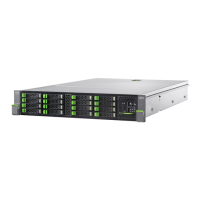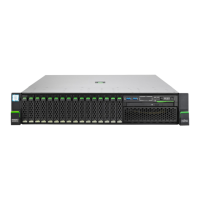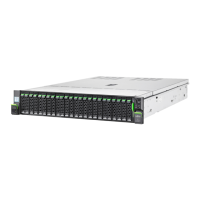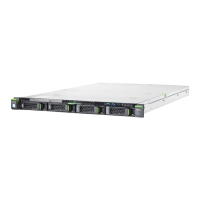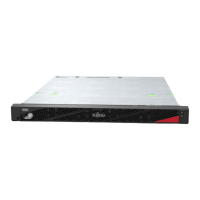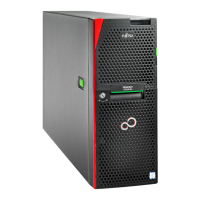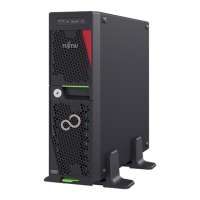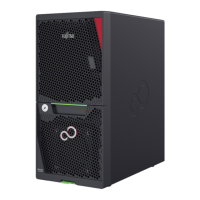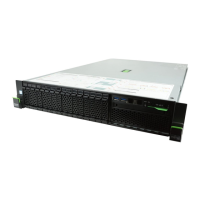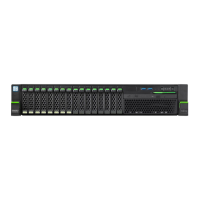▶
Remove the 13 screws (see blue circles, orange circles show the centering
bolts) from the system board.
▶
Use both hands to lift the system board carefully out of the chassis in a
slight angle. Thereby you pull the connectors out of the I/O panel.
CAUTION
▶
Always take the system board with both hands!
▶
Never lift the system board one-sided or at a heat sink,
because the solder connections between the socket and the
system board come under tension and increase the risk of
damage and malfunction!
▶
Do not damage the EMI springs which are essential to comply
with applicable EMC regulations and satisfy cooling
requirements and fire protection measures.
▶
Place the removed and the new system board on an antistatic surface.
▶
Remove the TPM, see "Removing the TPM" on page 394.
Installing the new system board
▶
Check the settings on the new system board, see "Onboard settings" on
page 458.
▶
Insert the system board by holding it at a slight angle. Slide the connectors
into the I/O panel, see
Figure 280.
▶
Lower the system board carefully into the chassis.
▶
Adjust the system board. If necessary adjust the position of the system
board with a gentle twisting motion (orange circles in Figure 280 show the
centering bolts).
▶
Fasten the system board with the 13 screws, see Figure 280.
▶
For Japan / APAC / North America only:
Replace the CMOS battery installed on the new system board with a new
CMOS battery, see "Replacing the CMOS battery" on page 388, because
charging of CMOS battery might be reduced during stocked in warehouse.
▶
Remove the heat sink with the CPU from the defective system board, see
"Removing the heat sink" on page 283.
System board and components
428 Upgrade and Maintenance Manual RX2520 M5
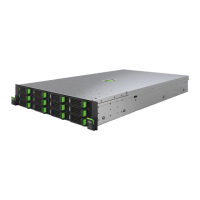
